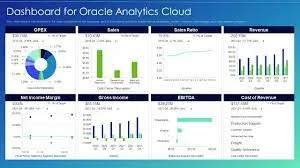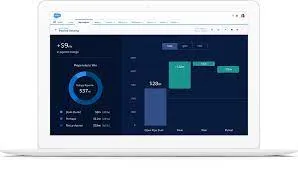Introduction
Data is a treasure, and it is everywhere. However, giving it sound-good names does not and will not make a difference unless it is channeled the right way– towards an “actionable” outcome. As the topic of companies grappling with data preparation challenges kicks in, we hear the term ‘augmented analytics’. It is a term that is not necessarily old in the market but definitely makes an implementation to watch out for. In this section, we will discuss its definition, how it works, use cases, and tools that are bringing this buzzword to the forefront.
Table of contents
- Introduction
- Augmented Analytics and its Importance
- Brief History
- How Augmented Analytics Work?
- Components of Augmented Analytics
- Use Cases of Augmented Analytics
- Benefits of Augmented Analytics
- Challenges of Implementing Augmented Analytics
- Augmented Analytics Tools and Platforms
- How to Choose the Right Augmented Analytics Tool for Your Business Needs?
- Emerging Trends in Augmented Analytics
- Conclusion
- Frequently Asked Questions
Augmented Analytics and its Importance
It is a branch of data analytics that employs artificial intelligence and machine learning to generate data in a contextual manner. With machine learning, augmented analytics discovers patterns or insights in the data without requiring a hand from data scientists. The analysis provided by augmented analytics tools is easy-to-understand and accessible by everyone – with or without technical expertise.
Brief History
The term was introduced by Gartner in 2017 in its Hype Cycle for Emerging Technologies report. The research firm emphasized its potential to unlock more opportunities for businesses and called it the “future of data and analytics.” The concept can be traced back to the evolution of traditional business intelligence (BI) and advanced analytics. As volumes of data grew, businesses started combining both technologies to harness better computational capabilities.
How Augmented Analytics Work?
Primarily, it works by leveraging AI and ML techniques to automate and enhance various stages of the analytics process. For starters, the mining and development of data using augmented analytics is a win-win for companies across varying industries. Then it can also automate data visualization and drawing actionable insights.
A real-world example of its work is visible in streaming platforms like Netflix and Amazon Prime. These platforms can leverage it to personalize recommendations for viewers based on their search and previously streamed content. Furthermore, it can also assist financial and government organizations in identifying and eradicating the risk of fraud. The rising demand for automation in data processing and data analysis tools is driving a boom in the augmented analytics market– given how well and fast it democratizes the data, making it approachable for everyone. This market touched US $8.93 billion in 2022 and is expected to reach US $48.67 billion by 2023.
Components of Augmented Analytics
The augmented analytics definition is pretty clear in the name itself. It extracts the larger side of the data and democratizes it– simplifying tasks for data scientists and employees with minimal technical knowledge. Now let us learn what makes it and how it works for businesses.
Machine Learning (ML)
Machine learning is the core of augmented analytics. The technology implies the process of gaining knowledge from learning models and algorithms. ML enables augmented analytics to clean, filter, structure, and inspect data, which also helps remove the repetitive manual maneuvers as well as the risk of human error. It results in actionable insights and data-driven decisions.
Natural Learning Processing (NLP)
Natural Learning Processing uses natural language understanding to extract information from unstructured data. With NLU, NLP enables businesses to work on data without depending on any programming languages.
Artificial Intelligence (AI)
Augmented analytics is a type of analytics that uses Artificial Intelligence (AI) to assist or automatically prepare data, analyze it, identify trends and patterns, and visualize these for end users.
Data Analytics Tools
Data analytics tools fuel more efficiency in the process of data analysis, enabling businesses to find the information they are looking for instantly and allowing them to gain a contextual view of business data. These tools offer features like dashboards, collaboration, and sharing and are also clad with self-service experience on devices, which results in faster response times.
Data Visualization Tools
Data visualization tools, enabled by NLP, simplify the understanding of insights by translating them into visuals, such as graphs, charts, images, text, etc. They provide explanations in language that everyone can understand without requiring any expertise.
Use Cases of Augmented Analytics
Thanks to artificial intelligence and machine learning algorithms, augmented analytics holds the capability to disrupt the way organizations analyze and interpret data. Let’s explore its use cases and see how it is helping different sectors harness the power of data.
Predictive Analytics
The implementation of artificial intelligence and machine learning algorithms in augmented analytics brings in a good scope for predictive analytics. The tools can predict future trends, detect potential risks, and come up with ways to address them. This allows businesses to proactively respond to evolving market conditions, optimize processes, and combat challenges. Augmented analytics gives a hand in fetching valuable insights within data, helping businesses to make smarter, data-driven decisions that drive competitive advantage.
Customer Analytics
Augmented analytics is a term to look up to in customer analytics. With the integration of customer data from different sources, like CRM, social media, or transactional databases, augmented analytics tools offer a view of customer preferences. This allows organizations to classify customer segments, interpret patterns, and discover the scope for personalization and targeted campaigns. Moreover, businesses can use augmented analytics to improve customer satisfaction and loyalty and boost revenue by providing personalized experiences.
Sales Analytics
Augmented analytics allows sales teams to gather new information based on historical data. Using AI and ML capabilities, it discovers and suggests effective actions to the team. The insights gathered from data analysis help managers save time and effort in decision-making as it minimizes the manual effort in analysis.
Supply Chain Analytics
The demand for accurate insights magnifies as the supply chain industry expands. Augmented analytics software helps supply chain operations with personalized information that is accessible with end-to-end visibility. It promotes efficient operations and smarter decision-making in real-time.
Financial Analytics
When it comes to the finance industry, a lot depends on data. From making informed decisions to managing risks– data and financial services go hand in hand. Augmented analytics benefits the sector by helping it with fraud detection, investment analysis, and customer segmentation by analyzing financial data. It identifies relevant anomalies and patterns for fraudulent activities using the analysis. Furthermore, it helps financial institutions to understand customer behavior, create personalized product recommendations and financial advice.
Benefits of Augmented Analytics
With the help of artificial intelligence and machine learning, augmented analytics eliminated roadblocks and errors that may obstruct clarity in insights. It offers insights that encourage teams with faster decision-making. Businesses can use these tools to identify anomalies and boost speed.
Is implementing augmented analytics beneficial to your company? The following advantages of the technology may help you find out the answer.
Improved Accuracy of Data Analysis
Augmented analytics automate the process of data integration and simplifies complex data structures, which minimizes human errors and ensures data accuracy. It uses AI and ML algorithms to analyze data and identify patterns, improving the accuracy of insights, predictions, and recommendations.
Faster and More Efficient Decision-making
Businesses can use it to get useful insights by consolidating different types of data. It eliminates the time spent reading between complex data and generates insights quickly, leading to informed decision-making.
Enhanced Insights Through Data Visualization
From KPIs to metrics, augmented analytics help generate insights from data in the most feasible way. With data visualization, it allows teams to access graphs, charts, and dashboards to get actionable insights.
Improved Collaboration Between Teams
Augmented analytics tools accommodate intuitive interfaces that enable business teams with different levels of technical expertise to explore data. These tools democratize data access, which allows employees across different departments to interpret data and share insights.
Challenges of Implementing Augmented Analytics
Augmented analytics can unlock new ways of exploring and leveraging data. While it has started to take on remarkable growth, companies are yet to make the best out of it, in their environment.
Here are the common challenges that might interrupt businesses from implementing augmented analytics in their environment:
Data Quality and Integration
Before businesses make something out of augmented analytics, there must be high-quality data to ensure the right implementation. Data quality is crucial in order to exercise augmented analytics as it ensures the right and accurate information for artificial intelligence and machine learning algorithms to process. Poor data quality results in vague results, misleading information, and, eventually– decisions that wreak havoc. Businesses can adopt suitable data governance tools to help organize their data for analysis. These tools are powered with capabilities that address challenges like data quality.
Technical Skills and Expertise
Before businesses can make augmented analytics platforms work in their favor, they will need to understand how data processing works. It doesn’t imply that one must be well-versed with technical knowledge. It rather suggests that everyone in the team must be familiar with the basics of data. Using augmented analytics only makes sense when it is directed with the right set of data. To ensure, technical skills and knowledge are essential to understand and interpret data for improved decision making.
Cultural and Organizational Change
A survey found that only 24% of companies have created a data-driven culture. As technology advances and market trends evolve, it requires businesses to be equipped with the skills, expertise, and equipment that help them pave the way through the competition. While companies are willing to take a notch up with data analytics, it is crucial for them to encourage shared beliefs and understanding of employees to enhance, value, and practice data.
Privacy and Security Concerns
Augmented analytics brings with it immense potential to transform businesses. However, privacy concerns still linger as a major topic around the system. Security breaches can make companies witness a dip while processing sensitive information. Such challenges include cloud storage access, fake data, and employee theft. These dangers can be mitigated with attention to the right planning, resources, and highly skilled professionals.
Augmented Analytics Tools and Platforms
The augmented analytics software and platforms are infused with artificial intelligence and machine learning capabilities, which allow them to perform a slew of tasks, including data preparation, analysis, and adding context to data. Organizations, businesses, and data scientists are using augmented analytics software to improve their understanding of massive amounts of data through enhanced data preparation. Let’s dive further to discuss the top augmented analytics tools.
Top Vendors of Augmented Analytics Tools and Platforms
Cognos Analytics

Cognos Analytics is an augmented analytics platform introduced by IBM. The integrated self-service capabilities of Cognos allow businesses to access data to create reports and build dashboards.
Power BI

Power BI by Microsoft is one of the most popular augmented analytics tools that allow teams to share insights across departments. The tool allows teams to integrate insights into apps/ websites and display data. Moreover, they can connect, model, and explore data in a visual form that can be shared and published.
Oracle Analytics Cloud

Oracle Analytics Cloud is an AI-enabled augmented analytics solution designed to make processes like data preparation, analysis, reporting, and visualization more accessible to users. From the same league comes a BI companion app that quickly and easily learns what the user may be interested in.
Einstein Analytics Platform

The Einstein Analytics platform is a tool devised with specific features for different roles and industries. The automated data discovery capabilities of this product allow users to create analytics as per their requirements and improve their experience by offering more insights with recommendations. Users can also tailor advanced experiences with the help of customizable templates or custom-built dashboards offered by Einstein.
SAS Visual Analytics

SAS Visual Analytics is an augmented analytics software available on-premises and in the cloud. It enables users to visually explore data and highlight key outliers and clusters automatically. With advanced analytics capabilities, SAS ingests data from a wide range of sources and can also manage complex data models.
How to Choose the Right Augmented Analytics Tool for Your Business Needs?
Choosing the right augmented analytics software or platform varies by various factors. What works for one company may not work for another. Here are a few considerations that businesses should make before investing in a tool:
On-prem or in the Cloud
The location of data is the most important factor to consider, given the fact that it must be connected to the software to offer accurate and fast insights.
Adaptability
Futuristic solutions go a long way. Businesses must take into account the capabilities of the software that mix up with the evolving technologies and trends.
Capabilities
It goes without saying– what augmented analytics software brings to the table is what matters the most. Can it explain the reasoning behind the answers? Are the insights offered by the software actionable? How will it work towards complex data? To make an investment in software successful, it is crucial to ensure its workability for different tasks and its implementation.
Emerging Trends in Augmented Analytics
The Focus on Continuous Discovery
Augmented analytics are majorly contributing to four parameters: automated data preparation, profiling data, translating insights to contextual information, and automation of constant discovery. As these processes are being adapted, businesses are shifting towards consistency in upgrades and changes that may surface in data. Since these aspects of augmented analytics are fueled by automation, it leads to efficient operational performance.
Augmented Analytics Software Vendors
With augmented analytics raging towards boom, there’s a notable trend in tools and software– and vendors who gather market traction while some companies approach augmented analytics tools. It is giving away to vendors to specialize in augmented analytics software, with, of course, the visible impending rise in augmented analytics.
User Experience
Businesses are leveraging augmented analytics to enhance user experiences. They can predict customer demands by exploring and interpreting data. Moreover, this trend is accented by several other trends and happenings in augmented analytics, such as automation, efficiency, data visualization, software, etc. Thus, businesses are using relevant data to identify patterns and scan through insights that are fruitful for them.
Conclusion
Companies are driving a good part of their budget towards unleashing the power of data collection. With machine learning in the lens, augmented analytics tools make the process of generating and interpreting data a plain sailing journey. It helps process and analyze data to aid in decision-making, reduces time, and reduces the workload by establishing an automated analytics system.
There are many augmented analytics examples and software that make it appear as a solution or everything! While that may be true, this system of AI and ML-backed analytics still insists that professionals have a fair understanding of data. The Blackbelt program by Analytics Vidhya helps you learn all about machine learning and artificial intelligence through a comprehensive curriculum, real-world examples, and tools. With this personalized course, you can also develop machine learning skills and natural learning processing, learn to build portfolios and earn a certification that will back you in paving through the competitive landscape.
Frequently Asked Questions
A. Augmented analytics is helpful for managers and executives as it helps them gain insights from data without applying any technical expertise. It also allows data analysts to improve analysis, prepare, and manage data faster.
A. Augmented analytics helps business people with data preparation and generates as well as explains actionable insights.
A. Predictive analytics is used for forecasting outcomes from historical data. It uses machine learning and statistical approaches. On the contrary, augmented analytics is used to support humans with various data analysis tasks and helps democratize data.




